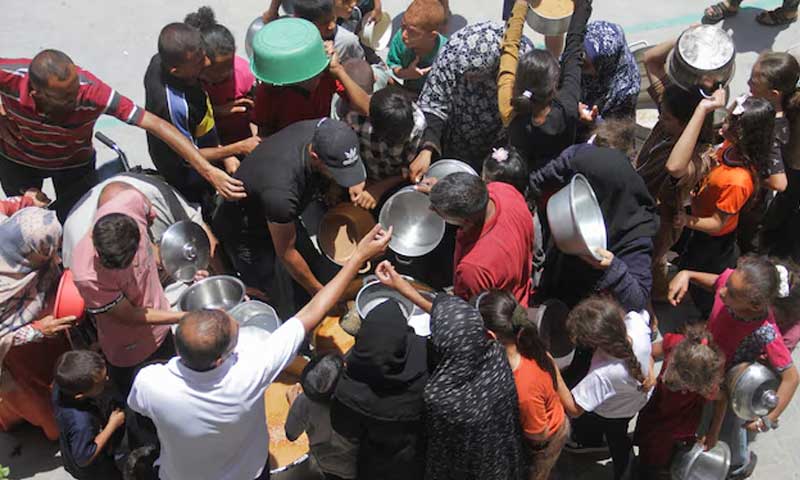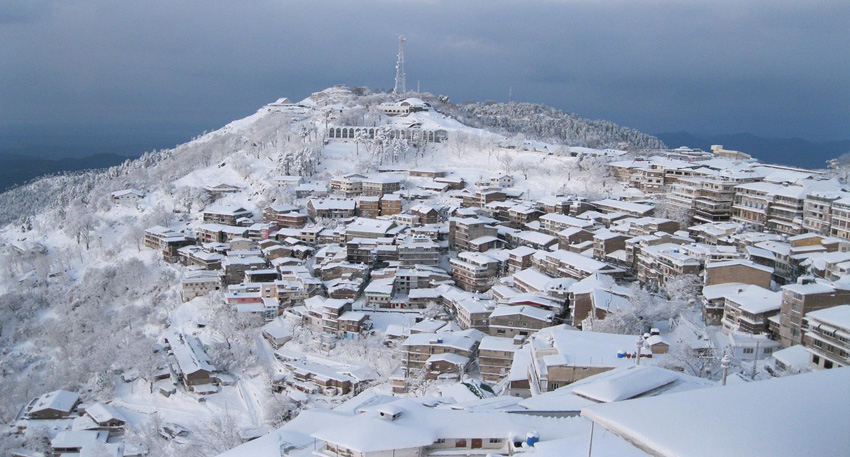
"In the southern governance, the situation deteriorated following the renewal of hostilities in early May. A high and sustained risk of famine persists," said Máximo Torero, Chief Economist of the Food and Agriculture Organization (FAO).
"On a regular basis more than half of the population...does not have any food to eat in the house and over 20% are going entire days and nights without eating," added Torero.
More than 495,000 people are facing the most severe, or "catastrophic", level of food insecurity, according to an update from the Integrated Food Security Phase Classification (IPC).
That is down from a forecast of 1.1 million in the previous update three months ago, but is still more than one fifth of Gaza's population.
Under "catastrophic" food insecurity, households suffer an extreme lack of food, leading to acute malnutrition in young children, an imminent risk of starvation, and deaths.
Also read: UNRWA chief warns man-made famine tightening grip across Gaza
The IPC assessment published on Tuesday said that in order to buy food, more than half of Gazan households surveyed had to sell clothes and one third gathered and sold rubbish. Over 20% reported going entire days and nights without eating. Overall, about 96% of the population faced high levels of acute food insecurity in the period until September.
The IPC said increased deliveries of food and nutrition services in March and April seemed to have reduced the severity of hunger in northern Gaza, where the U.N.-backed body had previously projected a likelihood of famine.
However, Israel's offensive around the southern city of Rafah from early May and other hostilities and displacement have led to a renewed deterioration in recent weeks, it added.
"The humanitarian space in the Gaza Strip continues to shrink and the ability to safely deliver assistance to populations is dwindling. The recent trajectory is negative and highly unstable," the update said.
The Famine Review Committee, a group of experts which reviews IPC findings, said in a report also released on Tuesday that there was "extreme human suffering" in Gaza and the risk of famine had not diminished.
The Rafah offensive led to the shutting of the crossing on Gaza's border with Egypt, which had been a main route for the delivery of food and other supplies, as well as an evacuation point for civilians who were critically ill or injured.
Also read: In Gaza, starving children fill hospital wards as famine looms
The closure, along with disruptions at the nearby Israeli crossing of Kerem Shalom, reduced humanitarian access to two million people in southern Gaza, said the IPC update, which covers the period from May 1 to Sept. 30.
Within Gaza, displacement to areas with less water and fewer health services "increases the risk of disease outbreaks, which would have catastrophic effects on the nutritional and health status of large segments of the population", it said.
Israel's military campaign in Gaza was launched after Hamas-led militants raided southern Israel on Oct. 7, killing around 1,200 people and seizing more than 250 hostages, according to Israeli tallies.
The Israeli response has killed almost 37,600 people, according to Palestinian health authorities, leaving Gaza in ruins and repeatedly displacing people within the blockaded and densely-populated coastal territory.
"One of the very, very key messages of this report is that as long as there is a continuation of hostilities, as long as there are restrictions on access, the risk of famine on the entire Gaza Strip remains real and remains highly significant," said Arif Husain, Chief Economist of the World Food Program. (WFP).
The IPC is an initiative involving U.N. agencies, national governments and aid groups that sets the global standard on measuring food crises.
Its most extreme warning is Phase 5, which has two levels, catastrophe and famine.
Famine can be declared if at least 20% of the population in an area are suffering extreme food shortages, with at least 30% of children acutely malnourished and two people out of every 10,000 dying daily from starvation or malnutrition and disease.




